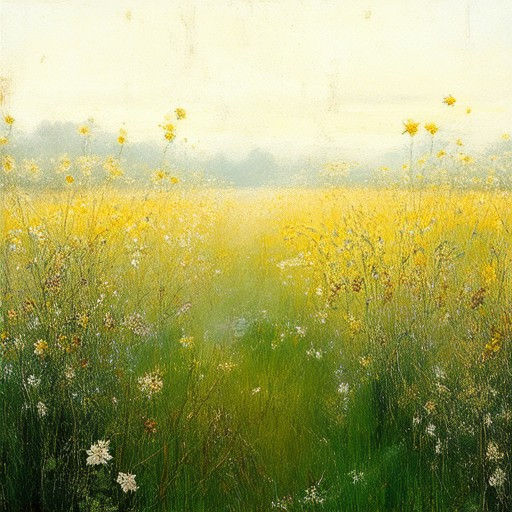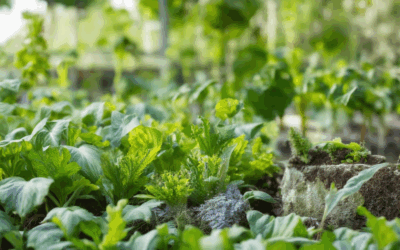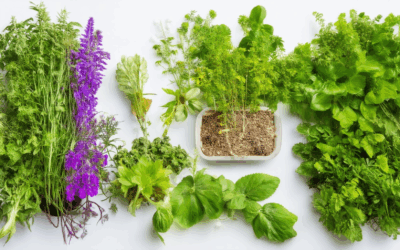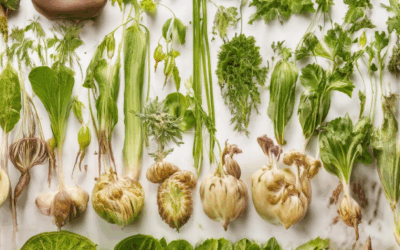Exploring the rich tapestry of history, **historic seed varieties** offer a unique window into the past, reflecting the ingenuity and adaptability of earlier generations. These old seed varieties, often passed down through centuries, are not merely plants but living archives of cultural evolution and environmental resilience. From the fertile lands of ancient civilizations to the diverse ecosystems of today, these seeds carry stories of survival, innovation, and tradition. In an era where sustainability and biodiversity are increasingly important, the preservation of **historic seed varieties** assumes a critical role in safeguarding our agricultural heritage for future generations.
Key Takeaways
– Unique Genetic Makeup: Historic seed varieties offer unparalleled genetic diversity, enabling them to thrive in diverse environments and adapt to specific climates.
– Cultural and Historical Value: These seeds are deeply rooted in regional cultures, reflecting traditional agricultural practices and dietary preferences of past generations.
– Nutritional Superiority: Many historic varieties boast higher nutrient content, enhancing flavor, texture, and overall nutritional value.
– Sustainability and Resilience: Known for their adaptability, these seeds are ideal for eco-conscious farming, requiring less synthetic input and demonstrating resilience in challenging conditions.
– Heritage Preservation: They serve as a bridge to the past, connecting communities to their agricultural roots and fostering a sense of continuity and tradition.
– Biodiversity Contribution: By preserving these seeds, we support genetic diversity, which strengthens plant resilience against pests and climate change.
– Organic Compatibility: Many historic seeds align well with organic farming practices, reducing reliance on synthetic inputs.
– Threatened Status: Despite their value, these varieties face extinction due to modern agriculture’s focus on hybrids and GMOs, posing a risk to global food security.
– Modern Relevance: They provide essential biodiversity benefits and cultural heritage, making them a cornerstone of sustainable farming and heirloom gardening initiatives.
Unique Characteristics of Historic Seed Varieties
Historic seed varieties exhibit unique traits that set them apart from modern hybrids, offering a wealth of benefits for gardeners and farmers.
- Resilience and Adaptability: These seeds are bred for durability, thriving in diverse conditions and resisting pests and diseases more effectively than many contemporary varieties.
- Biodiversity Enhancer: Planting historic seeds supports pollinator health and ecosystem balance, contributing to a healthier environment.
- Cultural and Historical Significance: Many historic varieties have cultural or historical importance, often tracing back to ancient civilizations or regional traditions.
- Sustainability Focus: Heirloom and historic seeds are perfect for organic farming and permaculture practices, promoting eco-friendly agriculture.
- Diverse Heritage: Each variety carries its own story, reflecting the agricultural practices and preferences of generations past.
- Natural Pest Resistance: Many historic seeds have innate defenses against common pests, reducing the need for synthetic pesticides.
- Higher Yield Potential: Some historic varieties may actually yield better harvests due to their genetic makeup suited to specific regions.
By choosing historic seed varieties, gardeners and farmers contribute to preserving biodiversity while enjoying plants that are naturally robust and culturally rich. Explore our collection of heirloom seeds to experience these unique characteristics firsthand.
Discover Our Heirloom Seed Collection
What Steps Can Be Taken To Preserve Historic Seed Varieties For Future Agricultural Use?
Preserving historic seed varieties is crucial for maintaining biodiversity and ensuring sustainable agricultural practices. Here are the key steps that can be taken to safeguard these valuable genetic resources:
1. Collection and Documentation
- Identify and Collect Seeds: Work with experts or organizations experienced in seed conservation to identify and collect seeds from heritage varieties. This often involves collaborating with local farmers, botanists, and agricultural institutions.
- Detailed Documentation: Properly document the collected seeds, including their origin, variety name, and unique characteristics. This ensures traceability and prevents confusion during storage and distribution.
2. Drying and Storage
- Dry the Seeds: Use professional seed-drying techniques to reduce moisture levels to around 13%, which is optimal for long-term storage. This prevents mold growth and extends the viability of the seeds.
- Storage Facilities: Store seeds in controlled environments, such as gene banks or seed libraries, where temperature, humidity, and pest control are maintained. Many organizations, like Seed Savers Exchange , offer facilities for seed preservation.
3. Genetic Diversity and Replication
- Replicate Varieties: Duplicate the seeds to distribute among various institutions and farmers. This ensures that multiple copies exist, reducing the risk of loss due to natural disasters or other unforeseen circumstances.
- Support Research and Development: Invest in genetic studies to understand the unique traits of historic varieties. This knowledge can be used to develop new crop types or improve existing ones, ensuring their continued relevance in agriculture.
4. Distribution and Education
- Share Seeds Widely: Distribute seeds to institutions, researchers, and farmers who can use them for cultivation and further preservation efforts. Platforms like Heirloom Organics facilitate access to rare and heritage seeds.
- Educate Farmers and Communities: Provide training and resources to farmers and community groups on the importance of preserving historic seed varieties. This builds awareness and ensures that future generations understand the value of these resources.
5. Collaboration and Advocacy
- Work with Institutions: Partner with universities, museums, and botanical gardens that specialize in plant conservation. Their expertise and resources can significantly enhance preservation efforts.
- Advocate for Policy Change: Collaborate with policymakers and NGOs to promote laws and programs that support seed preservation. This includes funding initiatives and creating databases for tracking seed varieties.
By taking these steps, we can ensure that historic seed varieties remain available for future agricultural use, supporting biodiversity and sustainable practices for generations to come.
What Are the Unique Benefits of Historic Seed Varieties?
Historic seed varieties, often referred to as heirloom seeds, offer a wealth of unique benefits that contribute to sustainable agriculture, culinary excellence, and cultural preservation. These seeds are more than just plants—they represent centuries of evolution and adaptation, making them invaluable for today’s challenges and future generations.
1. Genetic Diversity and Resilience
Historic seed varieties exhibit remarkable genetic diversity, which enhances adaptability to various environmental conditions. Unlike modern hybrid seeds, these varieties have been refined over generations, resulting in stronger resistance to pests, diseases, and adverse weather patterns. This resilience is particularly beneficial in uncertain climatic conditions.
2. Biodiversity Support
By preserving historic seed varieties, we support biodiversity and ecosystem health. These seeds provide essential nutrients and shelter for pollinators, birds, and other wildlife, contributing to the balance of natural ecosystems.
3. Culinary and Cultural Heritage
Historic seed varieties often carry rich culinary histories, offering unique flavors and textures that modern varieties may lack. Preserving these seeds helps maintain cultural identity and culinary traditions, allowing future generations to connect with their roots through food.
4. Climate Change Adaptation
In an era of climate change, historic seed varieties demonstrate remarkable tolerance to temperature fluctuations, droughts, and other stressors. Their ability to thrive under diverse conditions makes them a reliable choice for sustainable farming practices.
5. Enhanced Nutrition
Many historic seed varieties contain higher levels of antioxidants, vitamins, and minerals compared to contemporary hybrids. This nutrient density contributes to better health outcomes and offers more robust nutritional support for human populations.
6. Cultural Significance and Traditions
Historic seed varieties are deeply tied to cultural identities and traditions. They often symbolize resilience, hard work, and the passage of time, serving as a connection to historical practices and values.
Why Choose Historic Seed Varieties?
Old Seed stands behind the importance of preserving and promoting these timeless varieties. Our mission is to provide access to high-quality, non-GMO historic seeds that empower gardeners and farmers to grow their own food sustainably. Explore our collection today and experience the difference these ancient varieties can make in your garden or farm.
Discover the unique benefits of historic seed varieties and join us in our commitment to sustainable agriculture and culinary heritage. Visit Old Seed to learn more and shop our selection of heirloom seeds.
What Makes Historic Seed Varieties Unique and Valuable
Historic seed varieties are unique due to their rich genetic makeup, historical significance, and adaptability to various environments. These seeds hold cultural, ecological, and nutritional value that makes them irreplaceable.
- Genetic Diversity: Historic seeds carry unique gene pools that have been preserved through centuries. This diversity allows them to adapt to specific climates and conditions, making them invaluable for sustainability and resilience in agriculture.
- Historical Significance: Many historic seed varieties have deep roots in regional cultures. They often reflect the agricultural practices and dietary preferences of past generations, serving as a connection to heritage and tradition.
- Adaptability: These seeds are known for their ability to thrive in diverse growing conditions. Their resilience helps them survive in challenging environments, making them a reliable choice for eco-conscious gardeners and farmers.
- Nutritional Benefits: Many historic varieties have higher nutrient content compared to modern hybrids. They often retain ancient traits that enhance flavor, texture, and nutritional value, appealing to health-conscious consumers.
- Cultural Importance: Historic seeds play a role in preserving cultural identity. They are often passed down through families and communities, symbolizing continuity and tradition.
- Environmental Impact: By preserving these seeds, we contribute to biodiversity conservation. They offer a genetic library that can help mitigate the effects of climate change and promote sustainable farming practices.
These qualities make historic seed varieties not just plants, but living heritage that connects us to our past while shaping a healthier and more sustainable future.
Historic Seed Varieties
Historic seed varieties have long played a vital role in human civilization, serving as the foundation for agriculture and culinary practices that sustained early societies.
Key Uses of Historic Seed Varieties
- Farming:** These seeds were instrumental in cultivating staple crops such as wheat, barley, and legumes, which formed the basis of many economies and diets.
- Culinary:** Historic seeds were used for cooking, preserving food, and creating traditional recipes that have been passed down through generations.
- Traditional Medicine:** Some seeds were utilized in herbal remedies, offering natural healing properties and preventive health benefits.
Diversity Among Historic Seed Varieties
Historic seed varieties encompass a wide array of plants, each with unique characteristics and uses. These include:
- Heirloom varieties, preserved through centuries of cultivation
- Open-pollinated seeds, which naturally adapt to local conditions
- Primitive seeds, dating back to ancient times
The Importance of Historic Seed Varieties Today
While modern agriculture has relied heavily on hybrid and genetically modified seeds, historic varieties continue to offer significant benefits:
- Biodiversity:** They contribute to genetic diversity, which strengthens plant resilience against pests and climate change.
- Sustainability:** Many historic seeds require less synthetic inputs, making them ideal for organic farming practices.
- Heritage Preservation:** These seeds carry cultural and historical significance, connecting us to our agricultural roots.
Exploring the history of seed varieties allows us to appreciate the ingenuity of early farmers and the enduring value of traditional practices. At Old Seed , we celebrate this heritage and provide resources to help you learn more about and grow these timeless varieties.
What Historical Background Do Historic Seed Varieties Have?
Historic seed varieties have a rich and varied historical background that traces back thousands of years. These seeds represent the evolution of agriculture, reflecting the ingenuity and adaptability of early civilizations.
- Origins and Early Domestication: The history of historic seed varieties begins with the domestication of plants around 10,000 years ago. Seeds played a pivotal role in the development of agriculture, with early civilizations like Mesopotamia, Egypt, and China cultivating crops that relied heavily on seed propagation. The Fertile Crescent, particularly, is considered the cradle of plant domestication, where seeds became a cornerstone of daily life.
- Evolution Over Millennia: Through centuries of cultivation, selection, and migration, historic seed varieties have evolved to suit diverse environments and culinary preferences. The spread of agriculture via trade routes and cultural exchanges further diversified these varieties, leading to the development of hundreds of distinct types.
- Preservation and Conservation Efforts: Many historic seed varieties have been preserved through generations by small-scale farmers, seed savers, and organizations dedicated to heirloom gardening. Efforts like those of the Seed Savers Exchange have helped maintain genetic diversity, ensuring that these traditional varieties remain available for future use.
- Cultural Significance: Historic seed varieties hold deep cultural significance, often serving as symbols of resilience, tradition, and connection to the land. Many cultures celebrate these seeds through festivals, rituals, and culinary practices that have been passed down for centuries.
- Challenges in Modern Agriculture: In recent decades, the shift towards industrial agriculture and monocropping has threatened the survival of many historic seed varieties. The loss of genetic diversity poses significant risks to global food security, as it reduces resilience against pests, diseases, and changing climatic conditions.
Understanding the historical background of historic seed varieties not only sheds light on our agricultural past but also underscores the importance of preserving these invaluable genetic resources for future generations. By supporting heirloom gardening, seed-saving initiatives, and sustainable farming practices, we can ensure that these timeless varieties continue to thrive and contribute to a healthier, more diverse food system.
Learn more about historic seed varieties and their role in sustainable agriculture .








0 Comments